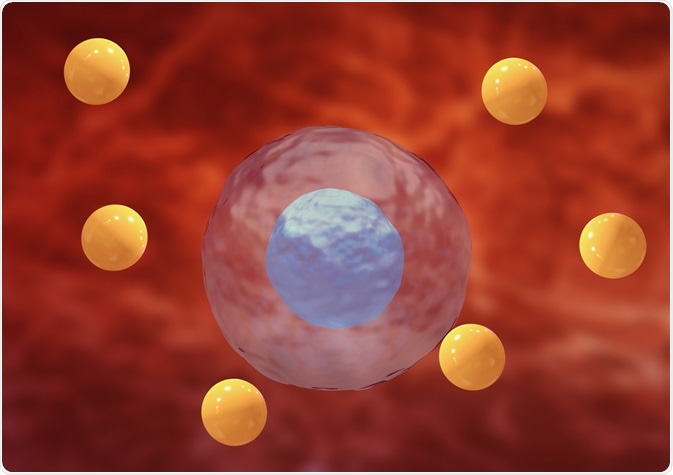Oxidative stress is the result of an imbalance between the production and elimination of oxidative agents by antioxidants, often the result of the excessive accumulation of reactive oxygen species during pathologic events such as cardiovascular disorders, cancer, and several age-related conditions.
 Image Credit: Adao/Shutterstock.com
Image Credit: Adao/Shutterstock.com
Reactive oxygen species are free radicals and can damage local cell components by electron transfer, changing the redox state of proteins and rendering them useless, altering the signaling pathways of the cell, or directly destroying DNA or membrane components. Oxidative stress also induces the expression of several transcription factors that go on to cause a signaling cascade, activating hundreds of genes associated with growth, immune response, and cell cycle transition.
Non-coding RNAs include micro RNAs (miRNA) and long non-coding RNAs (lncRNA), among others, and constitute the majority of RNA found in humans. They are generally involved in regulation and signaling and have been demonstrated to react protectively to oxidative stress from a variety of sources.
miRNAs, in particular, have been observed to be up- or down-regulated upon exposure to oxidative agents. For example, miR-141 has been seen to be more greatly produced in ovarian cancer, which induces local oxidative stress, and less strongly produced in the retina upon exposure to UV radiation.
Several lncRNAs also undergo altered expression in the presence of oxidative agents, also appearing to have tissue-specific protective roles. MALAT1, for example, has a protective role in endothelial tissues but appears to increase oxidative stress when applied to lens epithelial cells. Dysregulation of miRNAs and lncRNAs has also been associated with the inducement of oxidative stress, where regulatory elements that control free radical levels within the cell present insufficient redox capacity.
While miRNA usually acts in an inhibitory manner towards mRNA, bearing complementary sequences that inactivate mRNA, lncRNAs can be classified between: sense, antisense, bi-directional, intergenic, and intronic, based on the relative overlap of binding location with protein-coding genes, and operate diverse roles in cellular processes.
Non-coding RNAs, oxidative stress, and cancer
miRNAs and lncRNAs regulate most of the hallmarks of cancer, as the greater or lesser expression of genes related to cell proliferation or apoptosis, respectively, observed in cancer is often the result of or results in interactions with non-coding RNA.
Reactive oxygen species regulate tumorigenesis by acting as messengers within cancer cells, which are in a chronic state of oxidative stress. Sustained oxidative stress frequently endows cancer cells with greater aggression and promotes malignant transformation, though inducing additional oxidative stress in cancer cells is, however, a promising strategy in cancer therapy, as the damage caused by high concentrations of reactive oxygen species within the cell is sufficient to destroy them.
Low to moderate reactive oxygen species levels promote cell proliferation and survival, interacting with non-coding RNA to regulate the function of tumor growth suppressors and elevate the apoptotic threshold.
Metabolic processes within the cell are the primary generators and extinguishers of reactive oxygen species, and non-coding RNAs are heavily involved in the regulation of the metabolism. The interplay between reactive oxygen species and non-coding RNA, therefore, holds great potential for the development of therapeutic and diagnostic strategies against cancer, in addition to many other conditions that involve dysregulated non-coding RNA or oxidative stress.
Further Reading
Last Updated: May 25, 2021